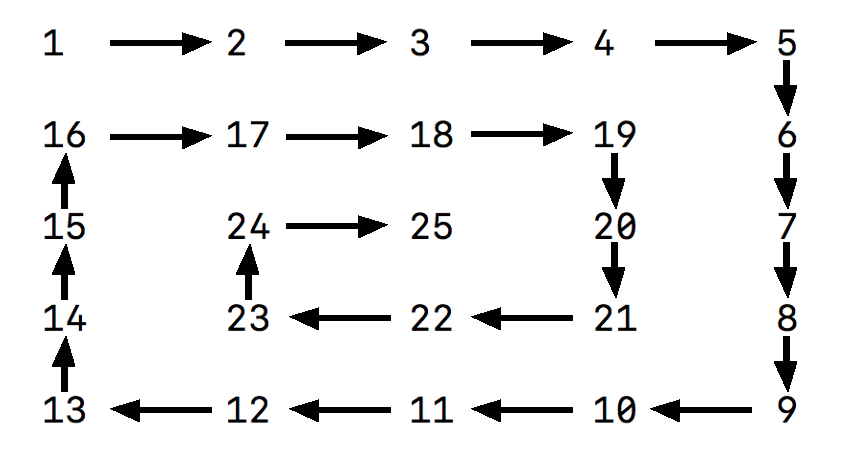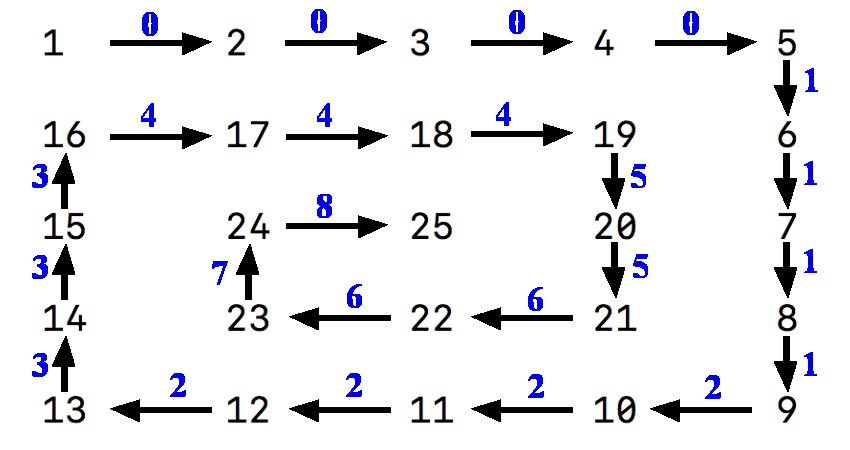MTH 4300: Midterm 2 Practice 6
The user input consists of two positive integers \(R\) and \(S\). Create a program that calculates the total number of integers \(k\) that satisfy \(R\leq k\leq S\) and that are divisible by \(7\) but not by \(5\).
When the product "ice cream" is sold, it has the base price and the tax applied to it. Different states have different taxes, but the base price stays the same. Create the class IceCream that has private attributes flavor, basePrice, and taxPercentRate; and appropriate public methods and constructors, including the following public methods: setFlavor, setBasePrice, setTaxPercentRate, getFlavor, and getTotalPrice. The class should also offer a constructor with two parameters: one of type IceCream and another of type double. This constructor will be used in the following way
IceCream B(A, newTax);
It should create an object called \(B\) that has the same flavor and basePrice as \(A\). However the taxPercentRate should be newTax instead of A.taxPercentRate. Provide a precise definition of the class and the implementation of the methods using the proper syntax of C++. When your class is applied to the following main function
int main(){
IceCream iceCreamAlaska;
iceCreamAlaska.setFlavor("chocolate");
iceCreamAlaska.setBasePrice(30);
iceCreamAlaska.setTaxPercentRate(10);
IceCream iceCreamTexas(iceCreamAlaska,20);
cout<<"Customers in Alaska have to pay "<<iceCreamAlaska.getTotalPrice();
cout<<" dollars for ice cream with flavor=" <<iceCreamAlaska.getFlavor()<<endl;
cout<<"Customers in Texas have to pay "<<iceCreamTexas.getTotalPrice();
cout<<" dollars for ice cream with flavor=";
cout<<iceCreamTexas.getFlavor()<<endl;
}
the program should print the following
Customers in Alaska have to pay 33 dollars for ice cream with flavor=chocolate Customers in Texas have to pay 36 dollars for ice cream with flavor=chocolate
What happens when the following program is executed? Provide a rigorous justification for your answer.
#include<iostream>
int main(){
int value1=0;
int value2=0;
int* p;
p=new int[100];
*p=14;
*(p+1)=3;
for(int i=2;i<100;++i){
p[i]=p[i-2];
}
for(int i=0;i<100;++i){
if( i+p[i] == 18){
value1+=p[i];
for(int j=0;j<100;++j){
value2+=p[j];
}
}
}
std::cout<<value1<<" "<<value2<<std::endl;
return 0;
}
What is printed on standard output when the following program is executed? Provide a rigorous justification for your answer.
// mysteryPrinting.cpp
// compile with
// c++ mysteryPrinting.cpp -o mPrinting -std=c++11 -fno-elide-constructors
// execute with
// ./mPrinting
#include<iostream>
class Wolf{
private:
std::string name;
public:
Wolf(const std::string & = "");
Wolf(const Wolf &);
Wolf(Wolf &&);
void operator=(const Wolf &);
void operator=(Wolf &&);
virtual ~Wolf();
};
Wolf::Wolf(const std::string & s){
name=s;
}
Wolf::Wolf(const Wolf& x){
name="A"+x.name;
}
Wolf::Wolf(Wolf&& x){
name="B"+x.name;
x.name+="C";
}
void Wolf::operator=(const Wolf & x){
name+="D"+x.name;
}
void Wolf::operator=(Wolf && x){
name+="E"+x.name;
x.name+="F";
}
Wolf::~Wolf(){
std::cout<<name<<std::endl;
}
Wolf whisper(Wolf z){
Wolf w("G");
Wolf r=z;
return w;
}
int main(){
Wolf a("X");
Wolf b("Y");
b=whisper(a);
return 0;
}
The user input consists of a positive integer \(n\). Create a program that prints the \(n\times n\) table that contains the numbers \(1\), \(2\), \(\dots\), \(n^2\) arranged in a spiral. An example for a spiral for \(n=5\) is shown in the picture below.

The user input consists of a sequence of distinct positive real numbers that ends in a negative number. The length of the sequence is not known in advance. Find the two numbers in the sequence that are closest to each other. Print these two numbers and their distance. The complexity of your program should be at most \(O(N\log N)\), where \(N\) is the number of terms in the sequence.
Example:
Input: 9.2 5.1 11.7 5 12 -1 Output: The closest numbers are 5.1 and 5. Their distance is 0.1.
